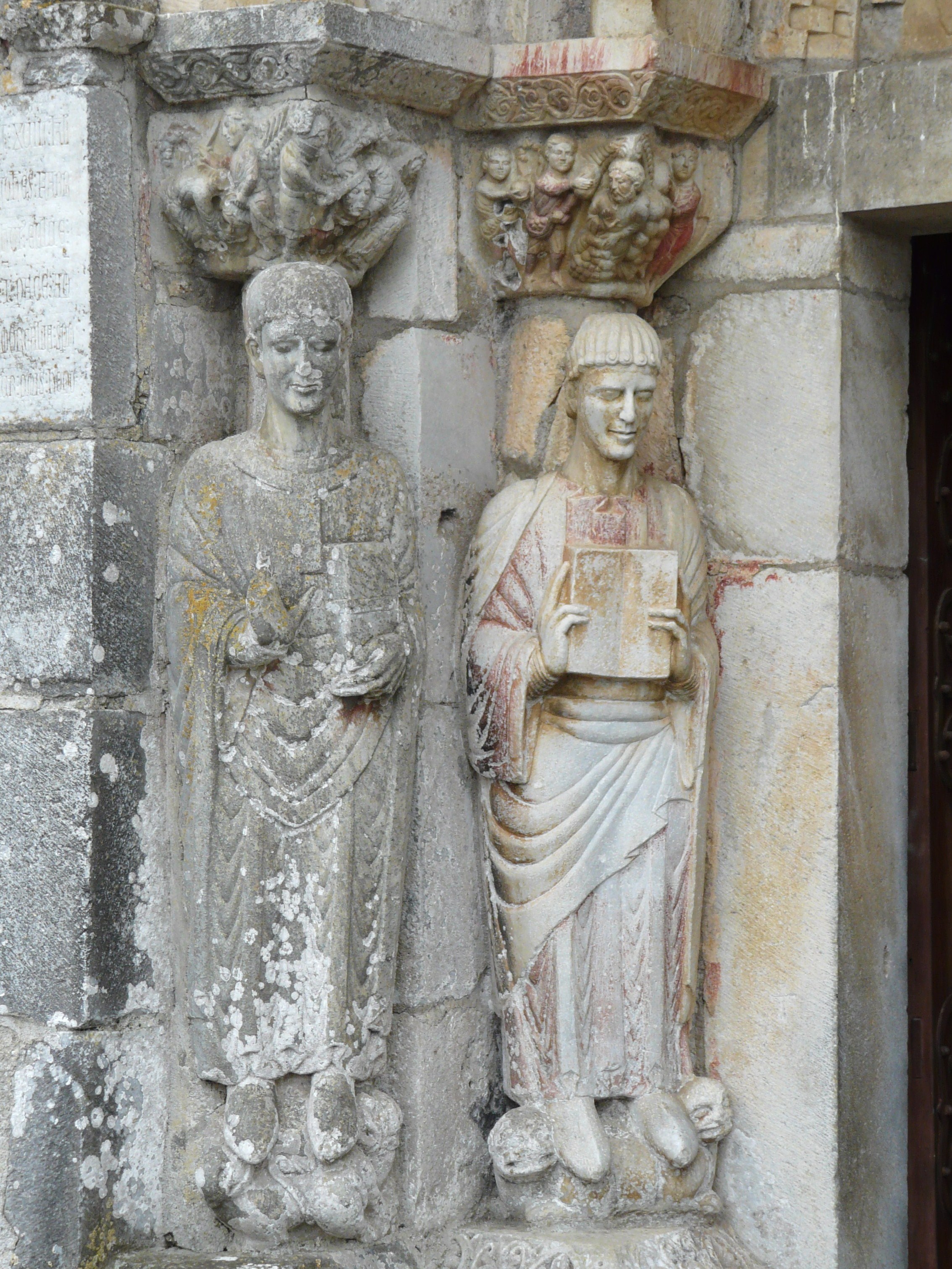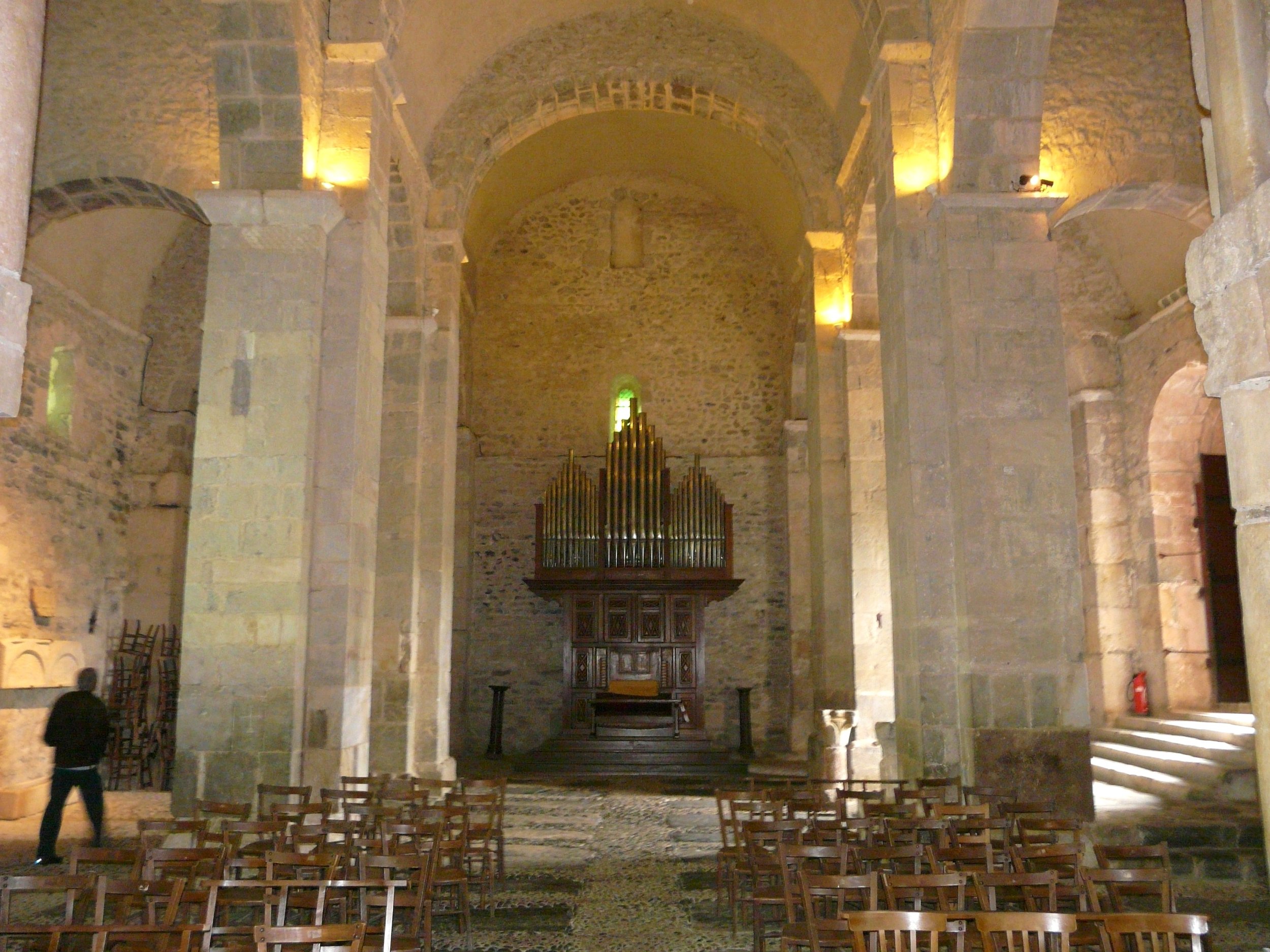Visiting master embroiderer Alain Dodier in Sainte Valiere, Southern France, was like straying into a medieval scriptorium, save that Alain is very much of our time Nonetheless, as he creates intricate vivid scenes in silk embroidery threads, using Bayeux stitching that harks back to the 11th century, his passion and dedication to historical detail and fidelity reminded me of the slow and painstaking creation of illuminated manuscripts that tell stories of great import to Western culture. His seven-meter panel about the Pilgrims’ Route to Santiago de Compostela is one such work.
Read MoreArchitecture
Elegant Simplicity /
So often this happens in life: you go to see one place or thing, and what ends up being the special highlight is not at all the object of your visit. Fate intervenes! This happened to me again when I went to see the famed cathedral of Saint-Bertrand de Comminges in the French Pyrenees. Yes, the great structure, first raised in 1073 near the site of a Roman city Lugdunum Convenarum, is impressive. It soon changed from its Romanesque beginnings to being a far more elaborate Gothic pilgrimage centre in the late 13th century,, adopting the name of its famed bishop, Bertrand de Got, Bishop of Comminges. Its interior is dominated by an amazing choir and sixty-six stalls, a marvel of carved portraits and scenes in oak, all designed so that the pilgrims visiting St. Bertrand's tomb would not interfere with the daily offices of the canons attached to the cathedral. But another delight awaited me after I explored the cathedral and surrounding small hill town.
A short distance away, below the Roman ruins and St. Bertrand de Comminges itself is the hamlet of Valcabrère. Down a small plane tree-lined road through the fields lies a gem - Saint-Just de Valcabrère. A small Romanesque church, dominated by a sturdy but perfectly proportioned square bell tower crowned with a pyramid tiled roof, it is intimately linked to its cemetery by the simple portal through which one enters the 11th century church.
Golden stone, perfect Romanesque arches, a sense of quiet and peace, simplicity everywhere - I was mesmerised. I have always loved Romanesque architecture and have often meandered through France to visit churches of this era, but Saint-Just de Valcabrère is one of the loveliest examples I have seen. The entrance is so restrained in the carved details, St. Etienne who was martyred in Alcala de Henares, Spain, on 6th August, 304 AD, during the terrible persecutions imposed by Diocletian. He is accompanied by two Spanish martyred priests in the outer carvings.
I was strangely lucky in the timing of my finding Saint-Just: as I arrived, I found all the little roads approaching the church jammed with cars and people walking to the entrance. The bell began slowly to toll - so I knew it had to be for a funeral. I joined the mourners and entered the totally packed church just as the priest was beginning the service. Again, perfectly proportioned golden arches, a sense of intimacy and timelessness, despite all the people. The altar in white marble is perhaps the most elaborate aspect of the interior, but it seemed totally appropriate. At the far end of the church from the altar, where normally one enters a church, there is an imposing organ, played beautifully when I was there.
I did not linger too long as people were still arriving and every chair in the church was required. So I slipped away, amazed and grateful at my wonderful magical moments. It is not every day that one happens on such elegant, beautiful simplicity.
Architecture's Links between Old and New /
Back on April 28th, 2012, I.M. Pei, the architect, was quoted by William Cook in The Spectator as saying, "What interests me about architecture are the links between old and new – art, history and architecture are indeed one."
I found the most wonderful example of this happy marriage between history, art and architecture during my visit to Matera, South Italy. In amongst the astonishing labyrinth of caves, grottoes, vaulted homes and churches in the golden tufa Sassi area, many inhabited for millennia, is MUSMA, the Contemporary Sculpture Museum of Matera. The museum of a many fingered series of tamped-earth floored grottoes, full of niches and wells dug deep into the cool tufa limestone, was originally a palace, the Palazzo Pomarici, dating from the 17th century onwards with some outer constructed rooms added on to the caves. The original caves go back, probably, to neolithic times, and have been used as dwellings or places of worship and refuge ever since.
All images courtesy of the Sassiland website
Yet today, the inspired marriage of art, history and architecture has resulted in an amazing structure that houses a really impressive collection of modern sculpture, Italian and international, from 1800 onwards, but mainly from the 20th century. Imaginatively displayed and placed in these cavernous grottoes or in the more traditional rooms, the collection is broad in scope and of very high quality overall. To complement the sculpture, there is a collection of prints and drawings, with a few small paintings, by many stars of the international modern art scene, mostly artists whose oeuvre has included some form of sculpture.
I found the links between the old and the new, through this museum of most unusual architecture, to be really memorable. It was a highlight of my trip to Matera, and well worth a visit for anyone who is in the Basilicata area of Italy.
Touches of Nature in our Daily Lives /
Nature, in the form of winter weather, seems to have loomed over-large in many people's lives in recent weeks, whether in North America or even in normally sun-filled Palma de Mallorca. Two weeks there of often rather chilly weather left me indoors more than I would wish, but all is relative! It meant that I began to think about other aspects of nature that show up in our daily lives.
The world of art and design is still amazingly dependent on inspiration from nature. I was reminded of this as I looked at illustrations of products on display at the current International Gift and Jewellry fair, IFEMA (Semana Internacional del Regalo, Joyería y Bisutería), being held this week in Madrid. The articles covering the show in El País newspaper were full of photos of jewellry, furnishings, wallpaper, ornaments or clothing inspired by flowers, leaves, animals and birds. Perhaps as the world grows more urban, we all need more reminders of the nature we are forsaking and often destroying?
I started looking at touches of nature that show up on buildings in terms of adornment. Think, for instance, of Antonio Gaudi's Sagrada Familia full of concrete evocations of the natural world, an amazing ensemble still rising in Barcelona. Look at a turtle holds up a column at the Sagrada Familia.
Sagrada Familia Turtle column base
Look up inside in the Sagrada Familia nave at wonderful columns that evoke sunflowers, daisies, whatever.
Detail of the roof in the nave. Gaudí designed the columns to mirror trees and branches. Sagrada Familia, Barcelona
Even the wonderful soaring new El Prat airport in Barcelona, a magnificently quiet and well-conceived building, is made more restful and welcoming by its subtle evocation of sea and serenity; a foam green/aquamarine glass is used throughout the building inside and out.
Inside Barcelona airport
Some of the most enduringly successful furnishings that have come down the centuries in France and elsewhere are full of evocations of elegant pastoral scenes, birds, animals and flowers.
Fabrics and wallpapers with such scenes abound -
Bamboo Indigo Katagami Fabric
19th century Katagrami-inspired carpetting
William Morris-inspired wallpaper
Silver objects frequently evoke nature, in their stylised shapes on teapots, urns, trays, dishes. This is just one example, a wonderful George IV English silver urn, full of echoes of nature.
A George IV silver Tea Urn , 1823 , United Kingdom
Furniture, too, has long hinted at animals' feet in the legs and finials of tables, chairs and other pieces. Marquetery has long evoked flowers in great richness. Inlaid stone tables have been an Italian speciality that can be wondered at in the Prado or V & A Museums, for instance.
Charles Cressent (French, Amiens 1685–1768 Paris), Commode, ca. 1745–49 (Image courtesy of Metropolitan Museum of Art, New York)
(Image courtesy of The Wallace Collection, London)
An Italian scagliola table top, Florentine, second half 17th century.
The Japanese, Koreans and Chinese have always been famed for their extraordinary evocations of nature in the objects with which they have surrounded themselves in daily life. Kimonos and netsuke, lacquer objects painted and carved, basketry and furniture, ceramics - the list is endless, but eloquent of the respect in which Nature has been traditionally held. The same can be said for most cultures and countries around the world.
Flowers and Grasses with a Praying Mantis, attributed to Ryūsa (Japanese, active late 18th century), Edo period (1615–1868), late 18th century
Sadly, most of us are so often busy and preoccupied that we don't notice many of the beauties of nature that are present in our world, in art and architecture, jewellry, furnishing, adornments or whatever. I am often fascinated to watch people walking - say, in an airport like Atlanta - on the beautiful granite polished slabs that now form the floors in many of the concourses. Most people never even really look at this marvellous touch of nature underfoot.
As an artist, I keep trying to remind myself simply to keep my eyes open and registering. Since I love to try to depict things in the natural world, I tend to gravitate to the touches of nature I find in my daily life. I find them uplifting and serene-making in many instances, and at the least, interesting, because they are also, often, interpretations of how other people have perceived that aspect of nature. Always fun, many times inspiring and enhancing.






















